Frank Israel
 Tuesday, October 2, 2012 at 7:25AM
Tuesday, October 2, 2012 at 7:25AM 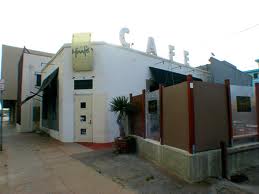 It has been a couple of months, but I want to go back and do a post that focuses on particular architects and designers who have influenced my work and creativity. While I am obviously a big fan of the clean lines of Mid-Century Modern design, I do appreciate more recent influences as well. At the end of the 20th century, architectural movements such as Postmodernism and Deconstructivism started experimenting with ornamentation and form, in contrast to the simplicity of Modernism. I think one of the more talented innovators of this period was an American architect named Frank Israel.
It has been a couple of months, but I want to go back and do a post that focuses on particular architects and designers who have influenced my work and creativity. While I am obviously a big fan of the clean lines of Mid-Century Modern design, I do appreciate more recent influences as well. At the end of the 20th century, architectural movements such as Postmodernism and Deconstructivism started experimenting with ornamentation and form, in contrast to the simplicity of Modernism. I think one of the more talented innovators of this period was an American architect named Frank Israel.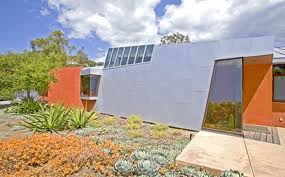 House at Carbon MesaFrank Israel died at age 50 in 1996 just as his work was gaining influence and recognition. It was, sadly, an early end to an amazing body of thought and work. He loved to experiment by pushing conventions of modernist design in terms of form, scale, and basic building materials while still trying to create a comfortable and accessible space for his clients. How structures were cited on a landscape was of great importance to him. In addition, he valued making his projects fit in with older structures (he often did renovations and additions to existing buildings) and with the natural landscape. In a period where many architects were pushing innovations of material and spiraling construction costs, his concern for his customers and the surrounding environment stood out.
House at Carbon MesaFrank Israel died at age 50 in 1996 just as his work was gaining influence and recognition. It was, sadly, an early end to an amazing body of thought and work. He loved to experiment by pushing conventions of modernist design in terms of form, scale, and basic building materials while still trying to create a comfortable and accessible space for his clients. How structures were cited on a landscape was of great importance to him. In addition, he valued making his projects fit in with older structures (he often did renovations and additions to existing buildings) and with the natural landscape. In a period where many architects were pushing innovations of material and spiraling construction costs, his concern for his customers and the surrounding environment stood out.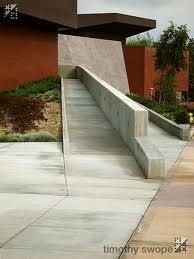 Fine Arts Building at Riverside Campus of UCLAIt was his adopted home of Los Angeles that was critical to his development as an architect. After working and studying on the East Coast, in Rome, and in Tehran, he moved to LA in 1979 in order to teach at UCLA's School of Architecture. Soon after, he became a set designer for several movies and then designed office spaces for independent movie production companies. With this experience, his designs made use of inexpensive everyday materials (plywood, stucco etc.) into assemblages of complex forms and vibrant structures that gave new life to drab warehouse spaces. This exposure in Hollywood lead to his being commissioned to create elaborate private residences for a number of clients in the film industry. At the end of his life, his architectural firm began work on much larger scale projects. Probably his most well known work is the Fine Arts Building at the Riverside campus of the University of California, which was actually not constructed until after his death.
Fine Arts Building at Riverside Campus of UCLAIt was his adopted home of Los Angeles that was critical to his development as an architect. After working and studying on the East Coast, in Rome, and in Tehran, he moved to LA in 1979 in order to teach at UCLA's School of Architecture. Soon after, he became a set designer for several movies and then designed office spaces for independent movie production companies. With this experience, his designs made use of inexpensive everyday materials (plywood, stucco etc.) into assemblages of complex forms and vibrant structures that gave new life to drab warehouse spaces. This exposure in Hollywood lead to his being commissioned to create elaborate private residences for a number of clients in the film industry. At the end of his life, his architectural firm began work on much larger scale projects. Probably his most well known work is the Fine Arts Building at the Riverside campus of the University of California, which was actually not constructed until after his death.
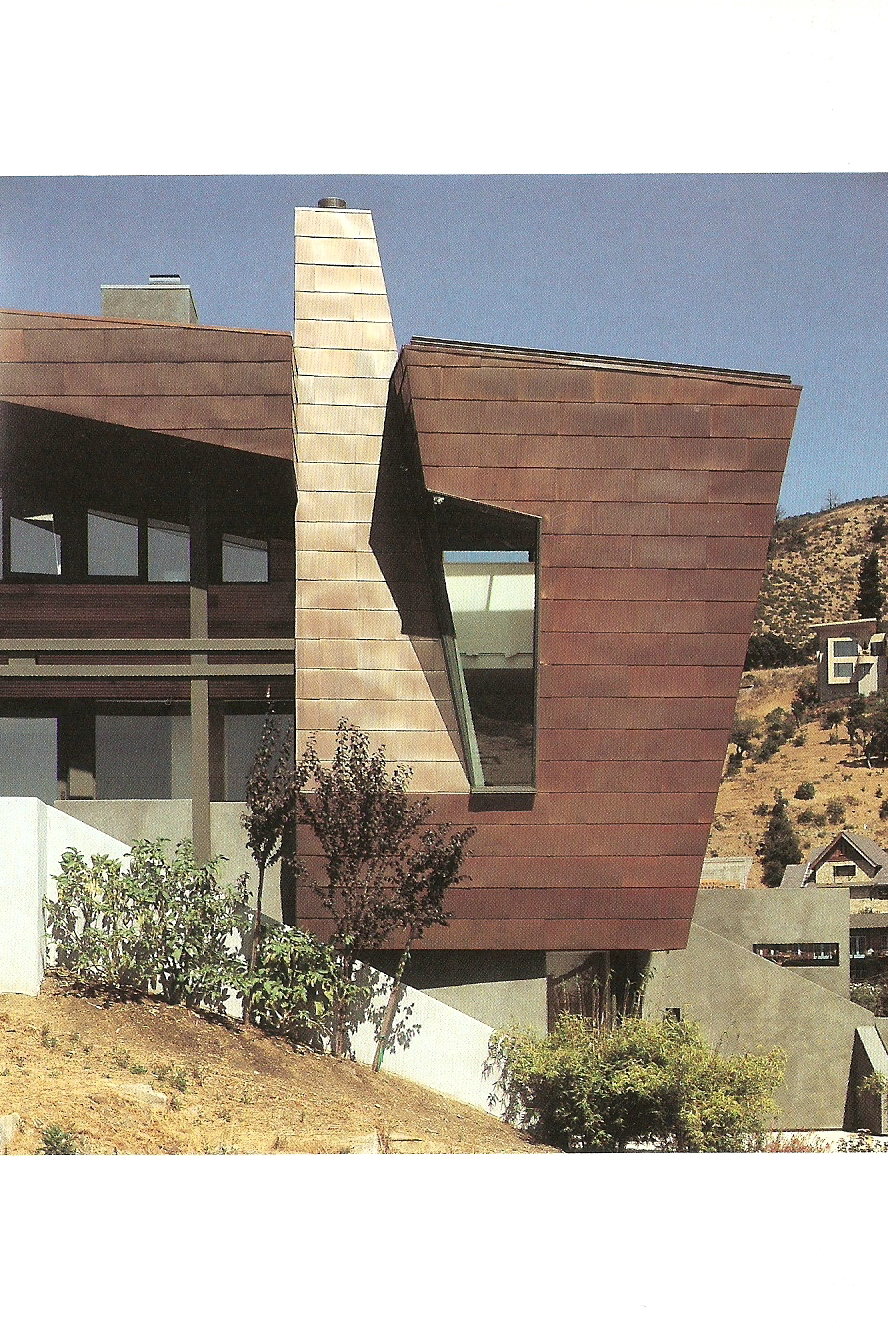 Drager House. Photo by Mark Darley.Throughout this period, he loved to experiment and found that LA gave him a place to do so. In turn, he and other local architects (such as Eric Owen Moss and Morphosis studio) created what some people have called the LA Style by altering conventions of form in unique an often challenging ways.. One design principle that drove Frank Israel was his love of cities and his desire to create “cities within buildings”. Just as a metropolitan area consists of a variety of scales, colors, local materials, and views of the surrounding areas, a building by Israel often contained this same type of variety under the same roof. Unique spaces within a building were connected to others that could be different structurally. It has also been suggested that Israel's “structural disequilibrium” was also influenced by the earthquakes and other natural disasters that the LA area is prone to. His work embodied the context in which it was created.
Drager House. Photo by Mark Darley.Throughout this period, he loved to experiment and found that LA gave him a place to do so. In turn, he and other local architects (such as Eric Owen Moss and Morphosis studio) created what some people have called the LA Style by altering conventions of form in unique an often challenging ways.. One design principle that drove Frank Israel was his love of cities and his desire to create “cities within buildings”. Just as a metropolitan area consists of a variety of scales, colors, local materials, and views of the surrounding areas, a building by Israel often contained this same type of variety under the same roof. Unique spaces within a building were connected to others that could be different structurally. It has also been suggested that Israel's “structural disequilibrium” was also influenced by the earthquakes and other natural disasters that the LA area is prone to. His work embodied the context in which it was created.
A personal favorite of mine is a residence he designed in the Bay Area in the aftermath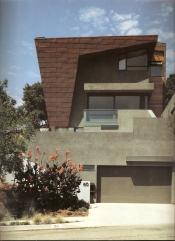 Drager House. Photo by Mark Darley. of extensive fires that burned the surrounding hillsides in the early 90s. The Drager House, nestled in the Berkeley hills, is a rich example of Israel’s facility in generating form while respecting context and site. The house immediately draws you in with a rich palate of materials, unexpected views, comfortable, livable spaces, and a respect for the site. Like his LA based work, it is fragmented and unified at the same time.
Drager House. Photo by Mark Darley. of extensive fires that burned the surrounding hillsides in the early 90s. The Drager House, nestled in the Berkeley hills, is a rich example of Israel’s facility in generating form while respecting context and site. The house immediately draws you in with a rich palate of materials, unexpected views, comfortable, livable spaces, and a respect for the site. Like his LA based work, it is fragmented and unified at the same time.
While he is not a household name the way say Frank Gehry is, Frank Israel is an example of great innovation in architecture, respect of the surrounding landscape, and the need for comfort and habitability tailored directly to his clients.
